Kat Furtado’s journey from a Speech-Language Pathologist to a full-time artist is a testament to the transformative power of creative expression and the profound impact of motherhood. Initially intending to return to her career after the birth of her first child, Kat found herself grappling with sleep deprivation, depression, and a sense of overwhelm that ultimately steered her towards a new path. Embracing her innate yearning for artistic expression, she discovered a newfound passion that not only allowed her to navigate her emotional landscape but also gave rise to Kat Furtado Art. Through the challenges of balancing parenthood and establishing her art business, Kat redefined success on her terms, creating meaningful, connection-driven artwork. In this interview, she shares her inspiring journey, the pivotal moments of her transition, and the lessons she’s learned along the way.
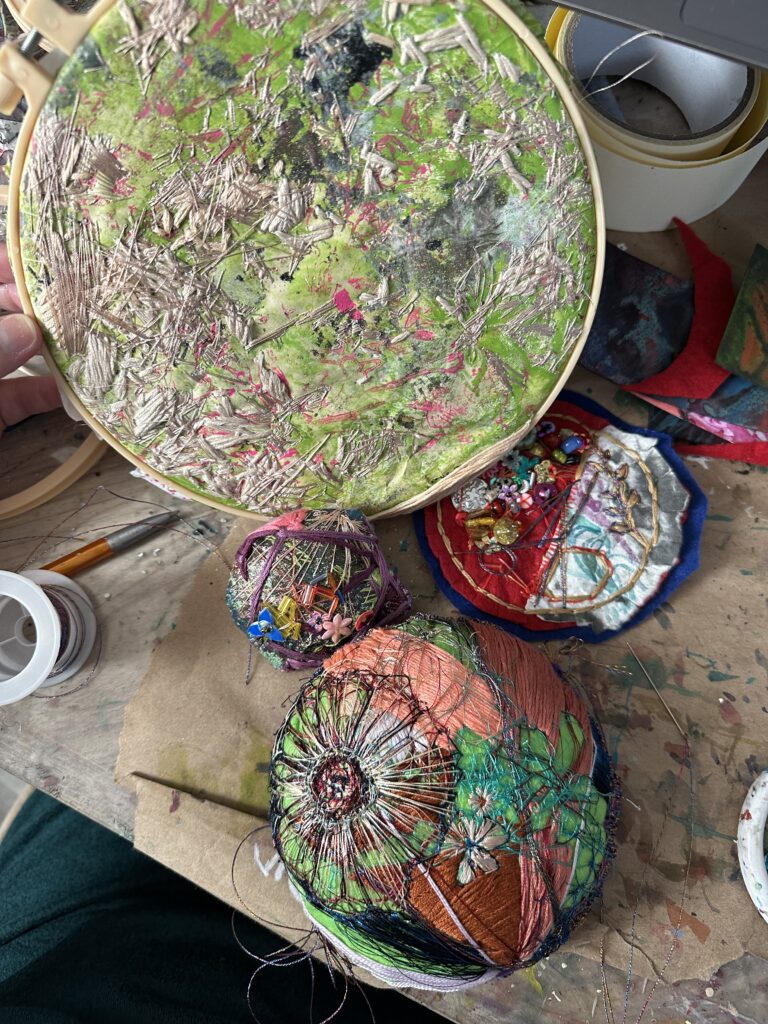
Can you share more about your journey from being a parent and a Speech-Language Pathologist to becoming a full-time artist? What were some pivotal moments in this transition?
Of course. When I had my first child, I had every intention of returning to Speech-Language Pathology. I even had a job lined up after the three-month maternity window was up. I’m still licensed and certified, but I realized quickly that in those early moments of parenthood, I was 1) far too sleep deprived to be able to do anything more than what I was already doing, 2) experiencing depression that was different than anything I’d ever experienced before, and 3) overwhelmed in a way that tangled me up entirely. My way out was following the yearning I felt for creative expression.
Having my kids was the best opportunity in the world for me because it not only gave me my favorite humans on earth, but also forced me completely out of my comfort zone. The easy thing to do would have been to go back and to return to my former life. I would have been tired, but I would have figured it out. Instead, I figured out something new about myself that I never would have imagined before having had kids.
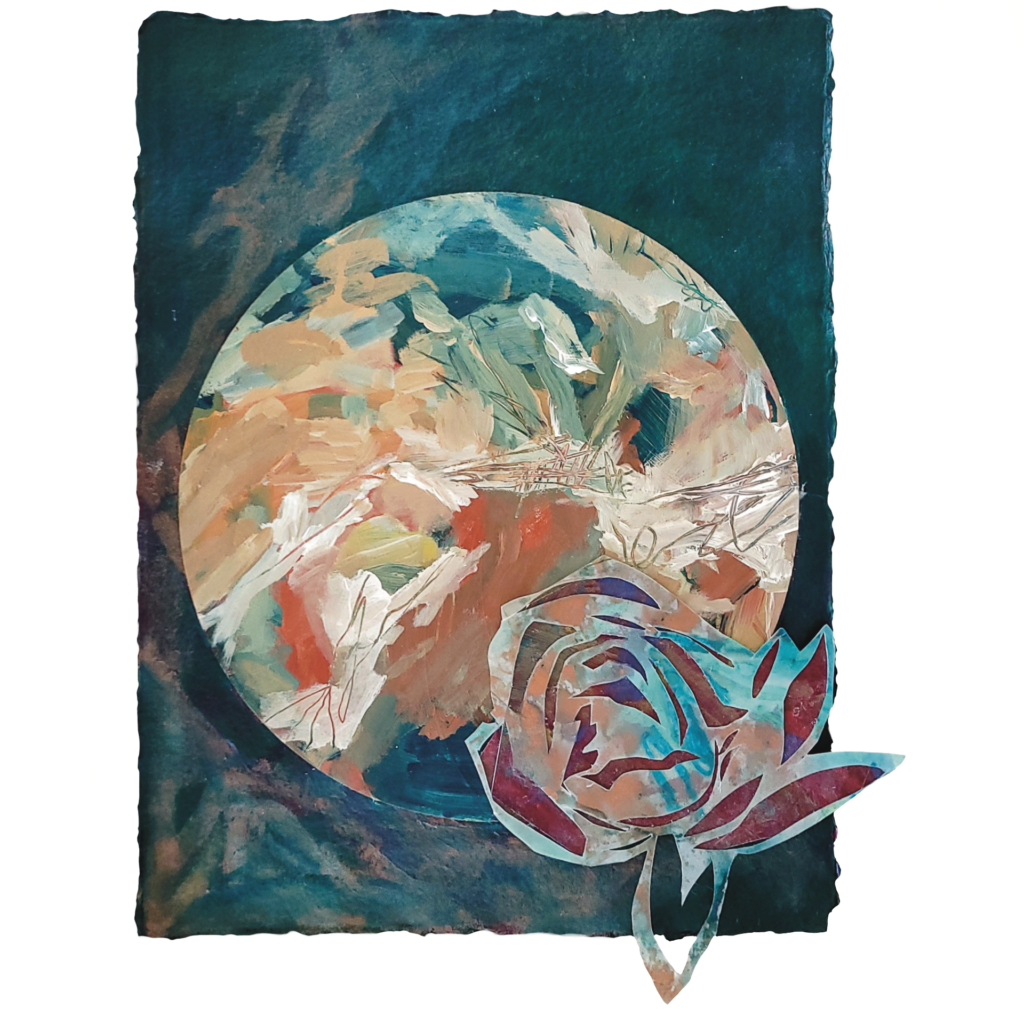
How did your experiences with loneliness, depression, and overwhelm influence your artistic expression and style?
I have experienced all of the above over many periods of my life. None of it was new, but all of it felt completely new in the context of caring for a child who was completely dependent upon me. I also wanted to be the best parent I could possibly be. I wanted to be present in every moment and a safe place to land for my daughter. The thing is, when you feel deeply defined by your career as I did with Speech-Language Pathology, you have a lot of soul searching to do if that career or life path changes.
The most obvious way the work influenced me is that the first time I truly picked up a paint brush with absolute focus and intention was to create some watercolor birds for my eldest child’s first birthday. She loved watching hummingbirds with me outside her window in the mornings. I painted little birds that became a touchpoint for my art and my business. I still use them today, and they still sort of define the early moments of painting. The thing is, when people saw the birds, they either assumed I was an established artist or that they were done by someone who was. This was really shocking to me and pushed me into the realm of “what if?” I wasn’t there yet, and I couldn’t define myself as an artist for a year or two after that.
Still, it planted the seed.
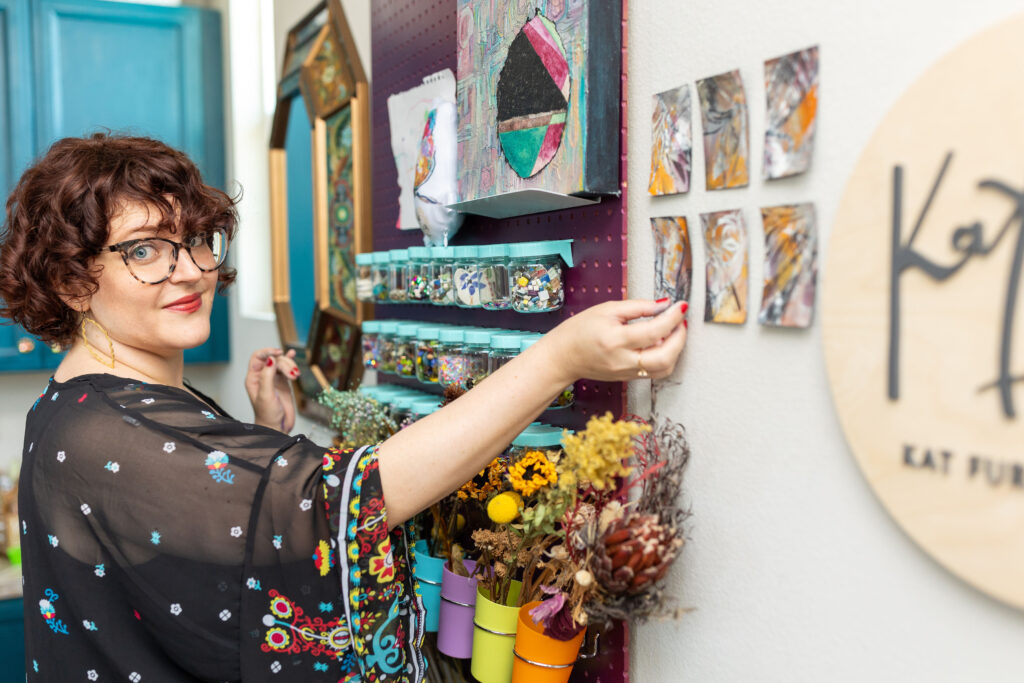
What challenges did you face while establishing Kat Furtado Art as a business, and how did you overcome them?
Time. Time is always so fleeting. There isn’t enough of it, and I’m very good at stretching myself too thin. I’m working on it.
The issue with product-based businesses that focus on meticulously handmade items is that they take a lot of time. New parents don’t have a lot of time, and I don’t have full time hours to dedicate to my work in this season of making. Not to mention that there are clear on and off-seasons in my business. For months, I’ll be working on huge projects until a “selling” season when most of my energy is spent on sending my art into the world. I can’t make these moments move faster and I can’t do them more frequently. I also can’t sacrifice the end product for a deadline because I value creating art that speaks to our shared humanity. I can’t just create any old thing and sell it.
This season in my life is defined by being torn in multiple directions: I’m very passionate about making sure that my final vision comes to life, but I’m also passionate about being a parent, and about being present for my kids. At most, I can dedicate two days a week when my kids are at school to creating. In some ways, I feel like I get a lot done. In others, I feel desperate to have more time to do more.
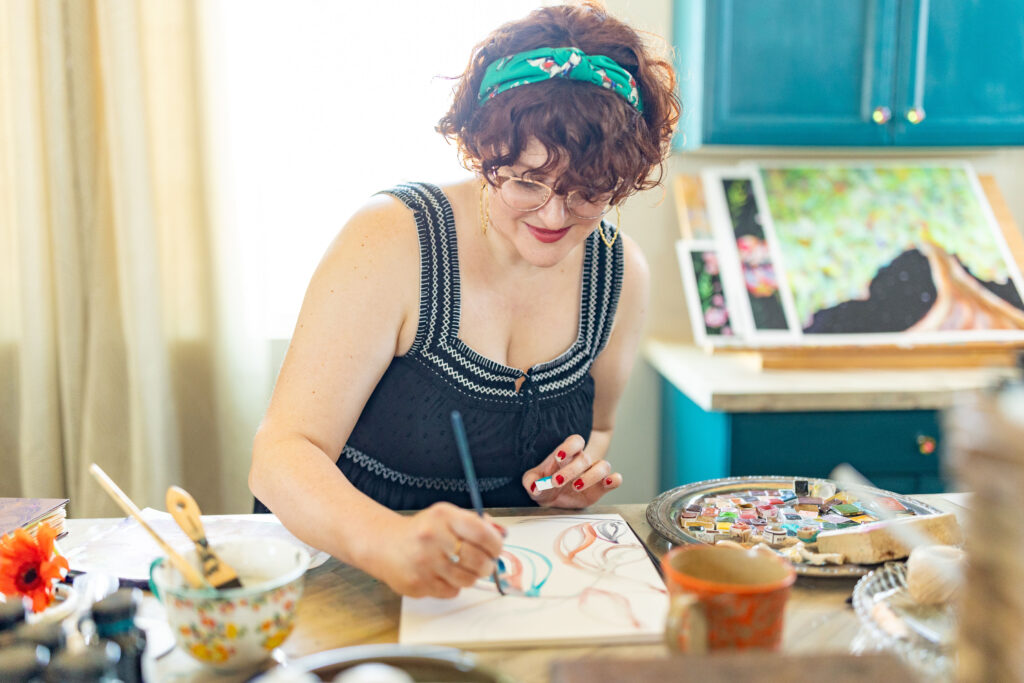
What lessons have you learned about balancing creativity with the demands of running a successful art business?
My secret to running a successful art business and the greatest lessons I have about balancing creativity is to redefine success by what you really want and not by the standards of society at large. There are a lot of metrics by which my business would never be considered successful by the average person. As an example, if you consider the cost/benefit analysis on a single task (like intricate hand-stitching) on a single piece that can take 40 hours, it would be wild to assume that is always a cost-effective choice. But art has never been about cost-effectiveness or utility or even beauty. To me, success is in the connection with the artwork. It’s in the process. It’s in reaching the Collector who purchases my work and can’t wait to buy more pieces for their space.
That’s how I measure success. In redefining the metric, I’ve allowed myself a chance to succeed. I have high expectations, lots of motivation, and an assumption that I am successful every time I do something I didn’t think I could do.
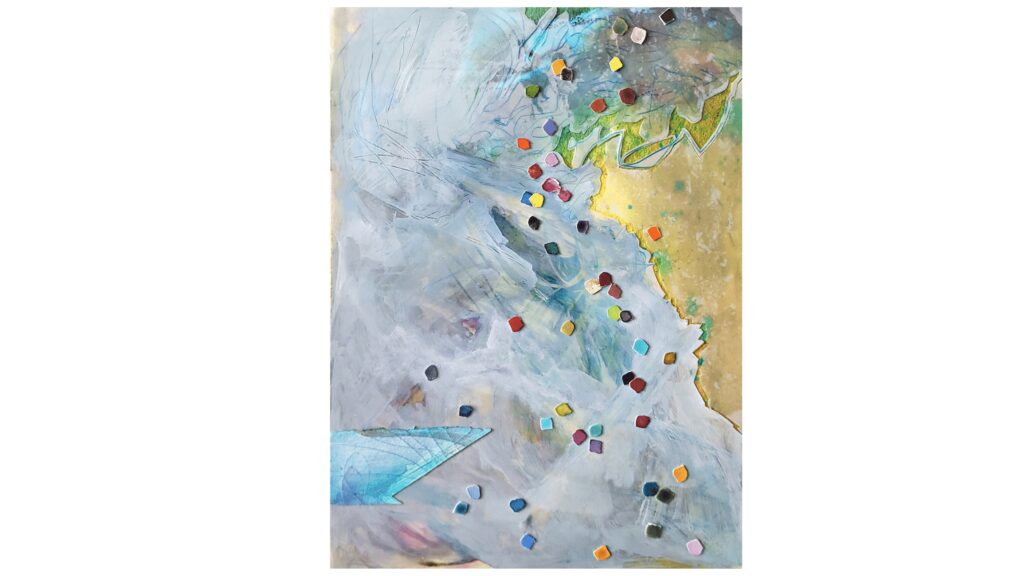
Can you discuss a particularly inspiring or memorable moment in your artistic career that reaffirmed your passion for creating art?
This may sound completely cliché, but I’m deeply humbled every time I sell my work. Every time. It’s a brilliant feeling when people connect with the art, and when they come back time and time again to collect more pieces, it’s just extraordinary.
I’m also floored by the understanding that my children see me as an artist without question. This is a title that it took years to adopt for myself, but to my children, they’ve only ever known me as an artist. It’s very powerful.
How do you stay motivated and inspired, especially during times of creative block or self-doubt?
I just keep going. There isn’t any secret about staying inspired–truly. I have systems in place so that even if I’m not ready to create a body of work (and there are so many bodies of work in my head just waiting to be released), I keep moving towards the goal. That’s one of the reasons I love assemblage and mixed media collage so much. Almost anything is usable in the right moment.
As for the self-doubt and creative block, I have to remind myself frequently that they’ll always be with me. That alone begins to silence the noise. They will creep in. I will have moments where I feel like I can’t continue. I come back to myself and the work I want to do and I begin to do it again.
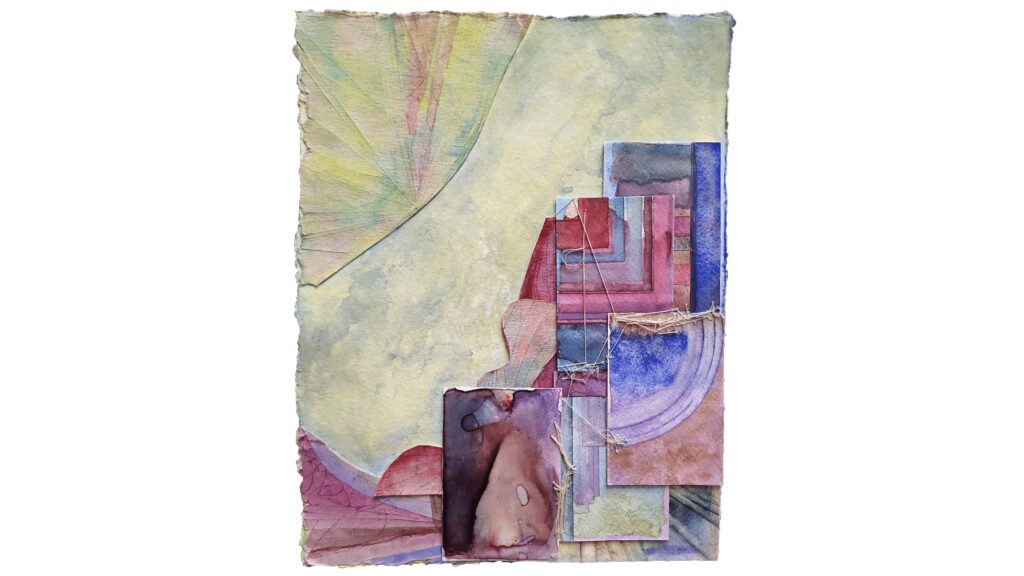
What advice would you give to aspiring artists who are navigating their own journey of self-discovery through art?
I would say that if you can embrace that none of us know anything and that we ALSO all know something, you’ll feel a lot better about your art. I find that the artists who recognize how little they know and see about the world are the ones who create the most exciting work. This is, of course, subjective, but when you know the journey is always ahead of you, there’s always something to learn, try, or do.
Have you encountered any misconceptions or stereotypes about artists or the art industry, and how have you addressed them?
I definitely have. I think that just by virtue of being female in an industry that greatly favors men (men, and specifically white men, have the most influence, representation, and art sales in the “art world”. They also charge the most for their art) means I’m pushing against the grain. That said, I have a great deal of privilege as well. People who are in marginalized communities, people in BIPOC communities, and folks in the LGBTQ+ communities are represented far less than white females in art worldwide. It’s far past time for their voices to be uplifted and for their art to be seen. I’m happy to support them in any possible way.
I suppose that is the greatest misconception: I believe it’s archaic to see art as simply competition for what is best. Creative expression doesn’t need to be “good”. It doesn’t need to be anything. It needs to exist. Sometimes it needs to be seen. Often, it needs to be shared.
In what ways do you use your background in Speech-Language Pathology to inform or influence your artwork and creative process?
Communication being the one thing that truly connects sentient beings. If you think about it, who are we if we can’t share ideas with one another? When we have a great day, we all want to tell a loved one and share it. When we say hello, or hug our kids, or pick up our groceries with a smile–we are sharing a moment with someone else. These are all basic communicative acts, but communication has transformed the existence of humans. We can work together because we can communicate. We get our needs met because we can communicate. I will never take that for granted.
I can’t imagine creating art that doesn’t express deep and meaningful ideas. I want everything I create to communicate something to whoever observes it. I can’t always control what is perceived, but just like if I do my best to say something eloquently, if I do my best to create art in the same way, I’ve done my job. If someone views my art and takes any new thoughts away, I’ve been successful. In this way, everything I make continues changing over time with each and every onlooker. Each interaction with any piece I create becomes a conversation. That’s so powerful to me.
What are your future goals and aspirations for Kat Furtado Art, and how do you plan to continue evolving as an artist and entrepreneur?
This is one of those questions I find really difficult to answer. I would love for my work to find a resting place in a museum or long-term installation, but that’s never my overarching intention. My singular goal is to keep creating. When my art is valuable to someone and valued by someone in the world, I am thrilled–of course I am thrilled. And that’s enough, but only as long as I get to keep making art.






